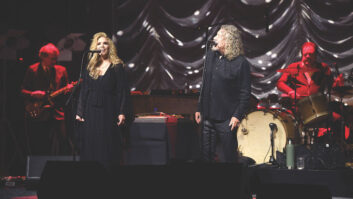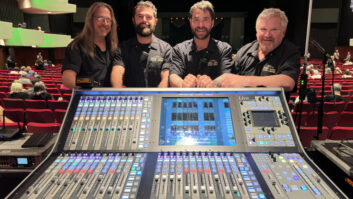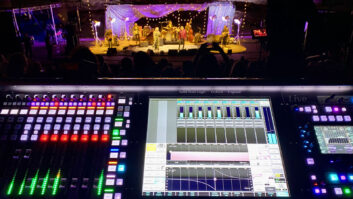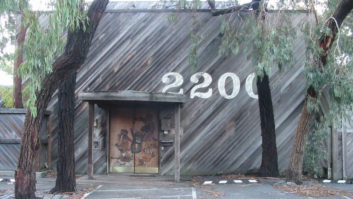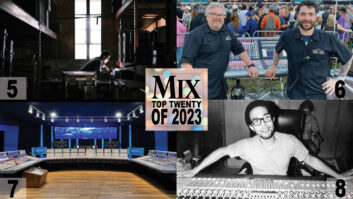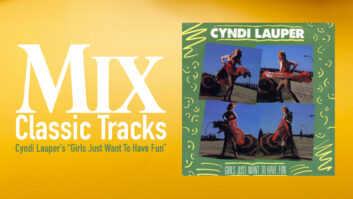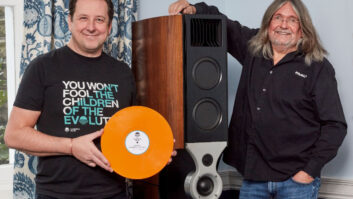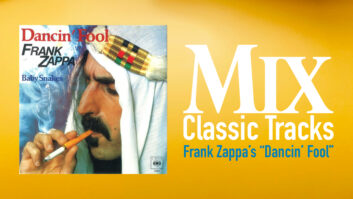Forget about convention. The Plant Recording Studios in Sausalito, Calif., has never been about convention. Over the past 27 years, an indefinable vibe has seeped through the curvilinear hallways, the classic collection of outboard gear and mics and the floating acoustic clouds, attracting top artists from Fleetwood Mac, Stevie Wonder and Sly Stone, to Metallica, Wu Tang Clan and the Dave Matthews Band. On the day Mix visited in mid-June, Kenny Wayne Shepherd was laying down vocals in Studio B, Third Eye Blind was tracking in A, and Primus was finishing up mixes in The Garden, the new 5.1 jewel in owner Arne Frager’s crown.
Frager, who bought into the studio in 1988, is now the longest continuous owner in The Plant’s colorful history. Last fall he negotiated a deal with investor Eckard Wintzen, owner of Ex’pression Center for New Media in nearby Emeryville, that allowed him to boost his record label, Pop Mafia; jump start an artist management company; and begin building his dream mix room, The Garden, pictured on this month’s cover.
“The Garden represents a commitment to mixing in the Bay Area,” Frager says, acknowledging that for years he had watched business flee to New York or L.A. after tracking dates. “We looked around and saw a business opportunity because nobody here seems to have made the major investment in a mix room, and I don’t just mean surround mixing. We wanted to build something completely different.”
The Garden is noticeably different, beginning with its elliptical shape and on through its state-of-the-art lighting system, which allows for 16.7 million hues out of its LED-based cans (no hum, no heat! visit colorkinetics.com). The room, formerly Mix 01 and home to Sly Stone’s “Pit” for many years, was redesigned by Frager, architect Robert Remiker and former Plant chief tech Manny LaCarrubba, who did the acoustics and designed the custom monitoring system. Rose Greenway was the visual artist and interior designer
“I’ve been working for some years with the wide dispersion of high frequencies, and I’ve developed what I call the Acoustic Lens,” LaCarrubba explains. “It’s a patented, proprietary device, and it gives a wonderfully flat response curve over a broad horizontal coverage area. Basically, it redistributes a driver’s sound power, stealing from the vertical Peter to pay the horizontal Paul. The sweet spot is just stupidly huge, and at the same time, you’re getting less splash off the console, floor and ceiling.” The mains utilize the Acoustic Lens for the midrange and tweeter sections; LaCarrubba has formed the company Sausalito Audio Works to market the technology.
When they excavated the Pit, they found a huge concrete…well, pit. Making use of the space, LaCarrubba created two 20-cubic-foot concrete enclosures to house the dual-18-inch subs. “Slab on grade, flush in the floor; there are no cabinet wall resonances,” LaCarrubba says. “There is no direct coupling to the building structure, except through the earth, which is the ultimate vibration sink.” The front wall is a broadband absorber; the back wall is soft as well but includes a cylindrical diffusor. The rear speakers are movable but are now placed to the European ITU spec of 120 degrees.
The centerpiece of The Garden is an SSL 8096 (G Plus Ultimation), refurbished extensively by Bruce Millett at Desk Doctor in Burbank. Frager admits the decision to go with older technology kept him up nights. But after talking to clients and weighing the upcoming analog vs. digital decision, he decided to replace his 4000 in Studio A with a 9000 this fall and hopes for two more years out of his 8096. “We’ll have the best of all worlds,” Frager says. “One room is a vintage Neve 8068, one room is a 9000 for tracking and mixing, and the mixing-overdub room is an 8096 with G Plus Ultimation.”
A fourth room, now used for pre-production, will be turned into a 500-square-foot stereo (later 5.1) mastering room beginning this fall, and construction on the outdoor garden patio, complete with Hawaiian foliage, waterfall, curved deck and hot tub for seven, will be complete by the time you read this. Frager realizes that much of his competition comes from the converted “house in the woods,” as he calls it, where artists set up temporary mixing quarters. Those studios can’t match him technically, he says, so he’s planning to bring the comfort they offer back home to Sausalito.
“I put a lot of money into The Garden and its outdoor space, and into the lighting,” he says. “I know a lot of my brothers in the studio business would have said, ‘Hey, take that other 200 grand and put it in a 9000. That’s a point of view I respect, but I have a different point of view, which is that I think creature comforts and vibe and ambience are just as responsible for hit records-and that’s what we’re talking about here. We’re not talking about the last bit in a 24-bit recording. I wanted to create the space that makes people feel like you have to feel to create those hits.”
